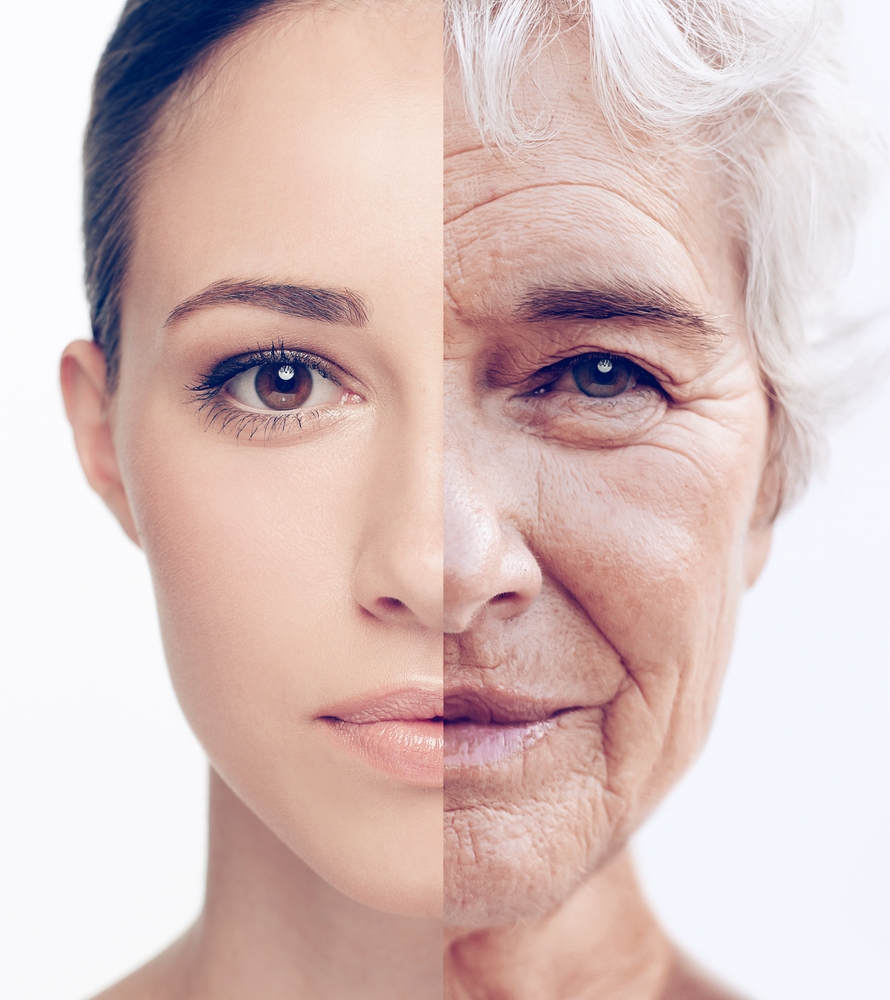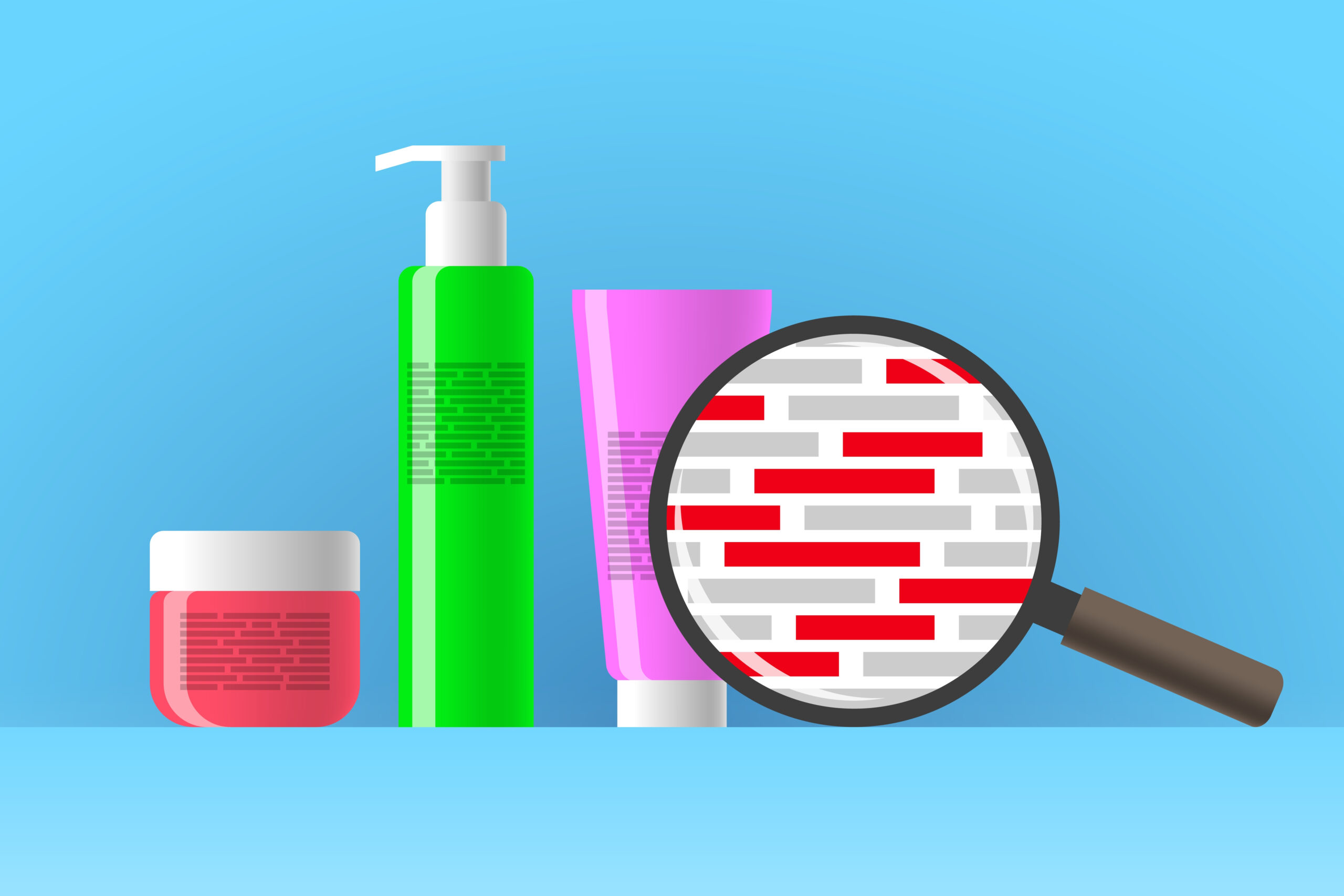Developing fine lines and wrinkles with age is one thing, but having a dusty gray complexion and rough, leathery skin texture is another. If your skin has lost its glow and looks damaged and weathered, it could be the result of any of these causes. Understanding where you might be going wrong in your skincare routine and lifestyle is the key to softening aging signs and bringing back vitality.
1. Dull Skin is Thirsty
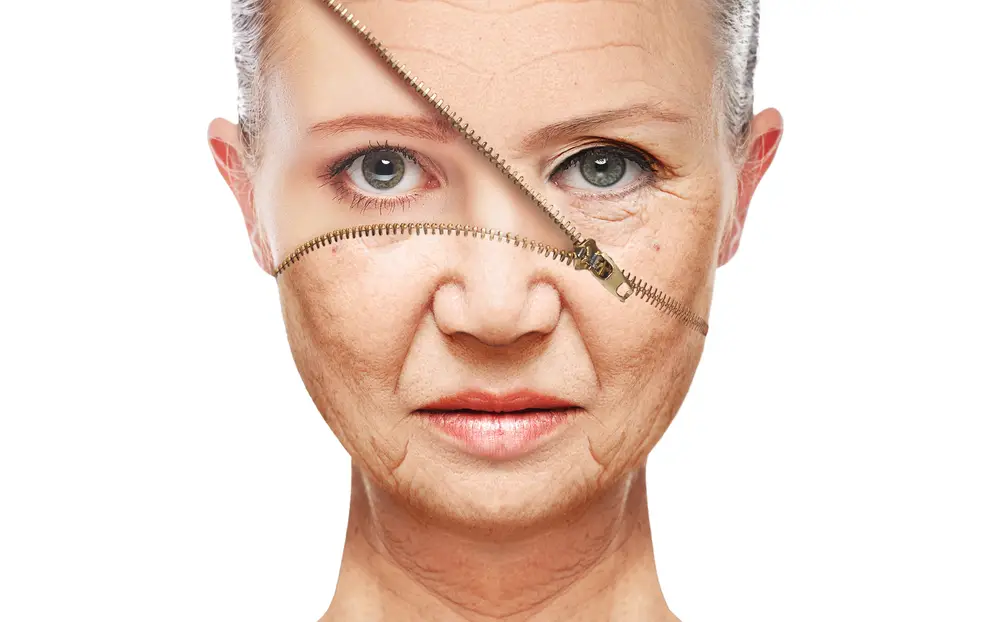
Your skin is like a sponge—it needs moisture to stay plump and healthy. When dehydrated, your skin loses bounce and can take on a grayish hue. To combat this, drink 2.7 liters of water daily and apply a hydrating moisturizer infused with hyaluronic acid or glycerin morning and night. For an added boost of radiance and to knock out that gray and promote rejuvenation, add a vitamin C serum to your anti-aging routine (apply after cleansing and before moisturizer)
2. Rough Skin Needs Sloughing
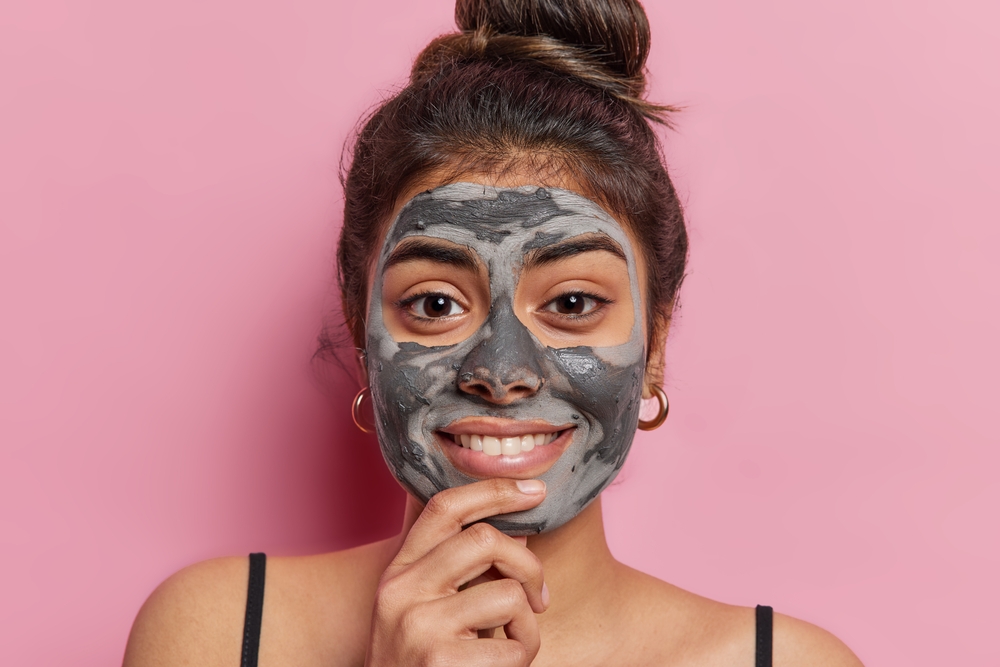
When you don’t exfoliate regularly, dead cells build up, making your skin look dull, gray, and lifeless. Incorporating a gentle exfoliant (look to enzyme and alpha hydroxy mask) into your skincare routine 2-3 times weekly is necessary. Don’t go overboard; too much exfoliation can irritate your skin, especially when using harsh, scratchy scrubs. You could also consider a professional microdermabrasion treatment, which uses tiny crystals to remove the skin’s surface to reveal a fresh, brighter layer.
3. Sun Exposure Makes Skin Weathered
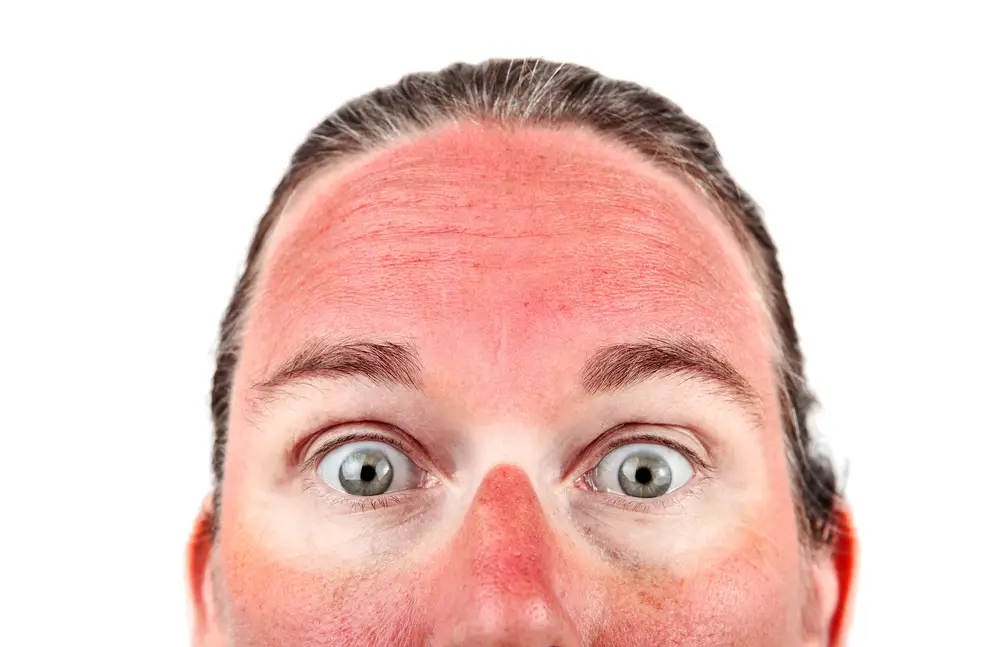
Sun damage is a major culprit behind gray, weathered skin. UV rays can break down collagen and elastin, the essential proteins that keep your skin youthful and firm. Always wear sunscreen with at least SPF 30, even on cloudy days, and don’t skip out on protective clothing or hats when you’re outside. If you’ve deep tanned for years and your skin is showing signs, add products designed to brighten skin tone to your daily routine, like vitamin C, niacinamide, retinol, glycolic acid, and hydroquinone
4. Smoking Turns Skin Gray and Leathery
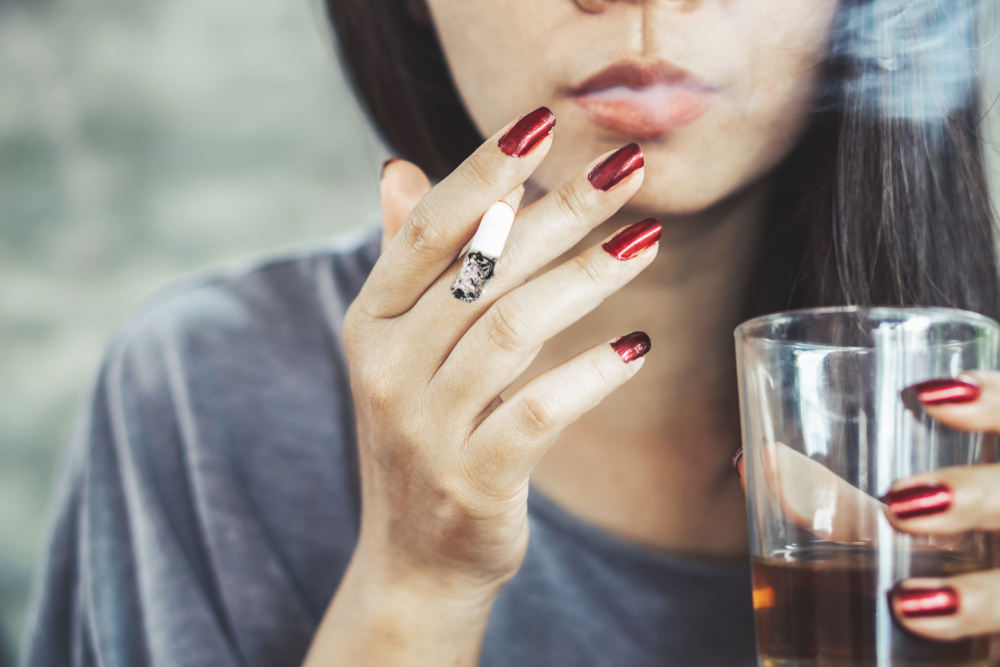
If you’re a smoker, your skin is paying the price. Smoking restricts blood flow, depletes vitamin C levels, and leads to premature aging and a gray, sickly appearance. Quitting smoking is one of the best things you can do for your skin and overall health, especially if you want to avoid those smoker’s lines around the mouth and cancer. If quitting is a challenge, consider seeking support from a healthcare provider.
5. Unhealthy Eating Shows on Your Face

You are what you eat, as far as your skin is concerned. If your skin looks dull, gray, and lifeless, you most likely lack essential nutrients, vitamins, and minerals and could have an iron deficiency or anemia. Focus on a balanced diet rich in antioxidants, fruits, vegetables, lean proteins, and healthy fats (salmon and mackerel are rich in Omega-3 fatty acids, which are ultra-nourishing for the skin). Vitamins A, C, and E, zinc, copper, and magnesium are all important for skin health, and if you lack Vitamin D, you aren’t getting enough sunlight and could have a sallow appearance.
6. Sleep Deprivation Robs Skin of Repair

Your skin repairs itself while you sleep. Skimp on sleep; you’ll likely wake up with a sallow complexion and dark circles. Aim for 7-9 hours of quality sleep per night to give your skin the time it needs to rejuvenate. A lack of sleep also makes you more prone to stress and anxiety, which is a major trigger of premature aging.
7. Stressing Out is a Fast Track to Aging

Stress doesn’t just mess with your mind; it wreaks havoc on your skin (and sleep). When your body is under stress, it can trigger flare-ups of conditions like eczema and acne and speed up aging, making your skin look tired and gray. Incorporate stress-reducing activities into your routine, such as exercise, meditation, relaxing self-care practices, and even just going for a long walk.
8. Your Skin Care Routine Doesn’t Cut it

Sometimes, the simplest explanation for dull, weathered skin is that your skincare routine isn’t cutting it. It’s crucial to use products suited to your skin type and treat its ever-changing needs. At a minimum, you need to cleanse, moisturize, and wear SPF daily, but if you have dry skin and a rough texture, you will need a more tailored anti-aging routine. If you’re unsure where to start, consult a dermatologist.
9. Skin is Under Constant Environmental Assault

Living in a city or industrial area exposes your skin to pollutants that contribute to a gray appearance. Pollutants can lead to oxidative stress and damage your skin’s natural barrier. Use antioxidant-rich products, and cleanse your skin thoroughly at the end of each day—do it twice, ideally.
10. Alcohol Dehydrates and Puffs Up Skin

Drinking alcohol dehydrates your body and your skin. It can also lead to inflammation and make your complexion appear tired and gray. Moderation is key. If you’re going to drink, balance it out with plenty of water and nutrient-rich foods. And while there’s no such thing as healthy drinking, less damaging options include champagne, light beer, and dry white wine.

Sometimes, gray skin can be a symptom of an underlying health issue, such as anemia or thyroid problems. If you notice persistent changes in your skin color, it’s worth visiting a healthcare professional to rule out any serious conditions.
12. Hormones Wreak Havoc on Skin

Hormonal fluctuations, such as those experienced during menopause or pregnancy, can affect your skin’s appearance. Estrogen levels play a crucial role in maintaining skin’s thickness and elasticity. Speak with your doctor if you suspect hormonal changes are impacting your skin.
13. Lack of Sunlight Leaves Skin Sallow

Vitamin D deficiency can make your skin look dull and tired. Since vitamin D is mainly obtained from sunlight, spending too much time indoors can contribute to a deficiency and a grayish complexion. Consider taking a vitamin D supplement, especially during winter, and try to get some safe, regular sun exposure safely (always apply SFP).
14. Genetics Are at Play

Genetics impact how and how fast your skin ages. While you can’t change your genetic makeup, adopting a healthy lifestyle and skincare routine can help you ward off premature aging, manage the effects of aging, and maintain a vibrant complexion even if you have mature skin.

